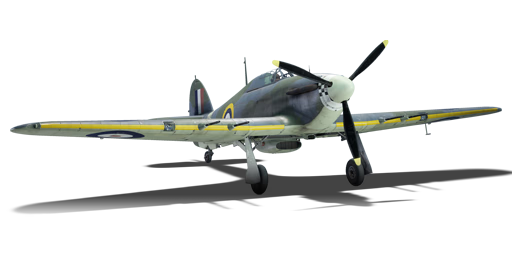

Aviation
Sea Hurricane Mk IC
II
Rank
AB
3.3
RB
3.0
SB
3.3
Battle rating
Great Britain
Research country
Fighter
Main role
9,200

Research
16,000

Purchase
General information
Flight performance
Max speed
at 3,962 m
509462543479 km/h
Rate of Climb
83.514.63.5 m/s
Turn time
1718.915.918.2 s
Max altitude
11,000 m
Takeoff Run
300 m
Landing
flaps
flaps
Take-off
flaps
flaps
Combat
flaps
flaps
Air
brake
brake
General characteristics
Crew
1 person
Engine
Length
9.6 m
Wingspan
12.2 m
Wing Loading
141 kg/m²
Weight:
Base weight
3.073.172.993.15 t
Fuel in main tanks
0.32 t (1h 18m)
Limits:
Max Speed Limit (IAS)
660 km/h
Mach Number Limit
0.79 M
G limit
≈ -6/11 G
Flap Speed Limit (IAS)
L / T / C
202 / 247 / 268 km/h
Gear Speed Limit (IAS)
320 km/h
Offensive armament
4 × 20 mm Hispano Mk.II cannon
Ammunition
500 rounds
Fire rate
600 shots/min
One-second Burst Mass
1.32 kg
| Belt | Belt filling | Armor penetration (mm) at a distance: | |||||
|---|---|---|---|---|---|---|---|
| 10 m | 100 m | 500 m | 1000 m | 1500 m | 2000 m | ||
| HEI/SAP-I/T | 22 | 20 | 14 | 9 | 6 | 4 | |
| AP-T/HEI/SAP-I | 37 | 35 | 25 | 16 | 10 | 7 | |
| T/HEI/SAP-I/HEI/SAP-I | 22 | 20 | 14 | 9 | 6 | 4 | |
| AP-T/T/HEI | 37 | 35 | 25 | 16 | 10 | 7 | |
| AP-T/SAP-I/HEI/AP-T | 37 | 35 | 25 | 16 | 10 | 7 | |
| HEI/HEI/SAP-I | 22 | 20 | 14 | 9 | 6 | 4 | |
Economy
Repair cost
Basic → Reference
AB
497 → 638 

RB
1,046 → 1,343 

SB
1,552 → 1,993 

Crew training
4,500 

Experts
16,000 

Aces
180 

Research Aces
190,000 

Reward multiplier
AB / RB / SB
30 / 80 / 150 % 

118 % 

Total cost of modifications
8,400 

9,390 

Talisman cost
640 

Research order:
Flight performance | |
|---|---|
Survivability |
|---|
Weaponry |
|---|
Rating by players
You must play more than 3 battles for the last week and more than 10 battles in a vehicle to rate it.
Like:
15
Flight performance:
Not enough ratings
Survivability:
Not enough ratings
Aerial combat:
Not enough ratings
Ground attack:
Not enough ratings
Balance:
Not enough ratings
Tips & Tricks
This space is currently empty
Do you know any interesting vehicle features?
Loading...
No articles about this vehicle yet
Become the first author and get rewards!
Write a guide, tell about interesting historical facts, make a tutorial or simply an interesting post.
No more content